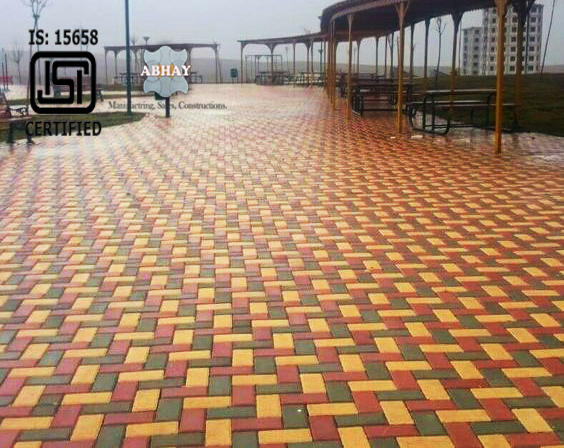Durability and Strength
Cement Tiles: Known for their dense, sturdy construction, cement tiles are made from a blend of cement, sand, and pigments. This composition makes them exceptionally durable, allowing them to handle heavy foot traffic, weather, and daily wear. Cement tiles are ideal for outdoor spaces and high-traffic areas where strength and longevity are essential.
Ceramic Tiles: Ceramic tiles, made from kiln-fired clay, are durable but can be more prone to chipping or cracking under heavy pressure. They are generally suited for indoor or moderate-traffic applications.
Natural Texture and Slip Resistance
Cement Tiles: With their natural matte finish and textured surface, cement tiles offer excellent slip resistance. This quality makes them particularly useful in wet areas like patios, pool surrounds, bathrooms, or entryways where safety is a priority.
Ceramic Tiles: While ceramic tiles come in various finishes, including slip-resistant options, glazed varieties can become slippery when wet. They may lack the inherent grip of cement tiles, especially in outdoor or high-moisture areas.
Aesthetic Uniqueness
Cement Tiles: Cement tiles are prized for their handcrafted look and vibrant, natural colors. They often feature intricate patterns, artistic designs, and rich, bold colors that bring character and style to any space. This makes them ideal for projects with a vintage, Mediterranean, or industrial aesthetic.
Ceramic Tiles: Ceramic tiles offer a broad range of designs and can mimic other materials (like wood or stone). However, they typically lack the artisanal, handcrafted charm of cement tiles, which can make cement tiles a more appealing choice for unique or statement-making designs.
Thermal Properties
Cement Tiles: Cement tiles have a high thermal mass, meaning they absorb and release heat slowly, helping regulate temperatures. This property makes them cooler underfoot in hot weather, a valuable feature for outdoor or sun-exposed areas.
Ceramic Tiles: Ceramic tiles are not as effective at thermal regulation but still offer a relatively cool surface. However, they may not provide the same comfort and cooling effect as cement tiles in warmer climates.
Environmental Impact
Cement Tiles: Cement tiles are generally more eco-friendly, as they are made using natural materials and without the energy-intensive kiln firing process. Many manufacturers use eco-conscious practices, making cement tiles a more sustainable choice.
Ceramic Tiles: The firing process for ceramic tiles requires high energy, resulting in a larger carbon footprint. While ceramic tiles can last a long time, they aren’t as eco-friendly as cement tiles.
Maintenance and Care
Cement Tiles: Cement tiles are porous and require sealing during installation and periodic resealing to prevent staining and moisture absorption. However, with proper care, they develop a beautiful patina and can last for decades without losing their charm.
Ceramic Tiles: Ceramic tiles are non-porous (especially glazed varieties) and don’t need sealing. They are low maintenance and easy to clean, making them convenient for high-use indoor spaces but lacking the weathered beauty that cement tiles develop over time.
Cost and Installation
Cement Tiles: Cement tiles generally come at a higher initial cost due to the labor-intensive production process and heavier installation requirements. While installation may be more complex, the long-term durability and aesthetic payoff make them a worthwhile investment.
Ceramic Tiles: More affordable upfront, ceramic tiles are lighter and simpler to install. This makes them ideal for budget-conscious projects and for use in areas where intricate installation isn’t as crucial.
Ideal Applications
Cement Tiles: Perfect for outdoor spaces, patios, high-traffic commercial areas, feature walls, and entryways where durability and an eye-catching design are desired.
Ceramic Tiles: Best suited for indoor areas like kitchens, bathrooms, and backsplashes where budget and ease of maintenance are priorities.



